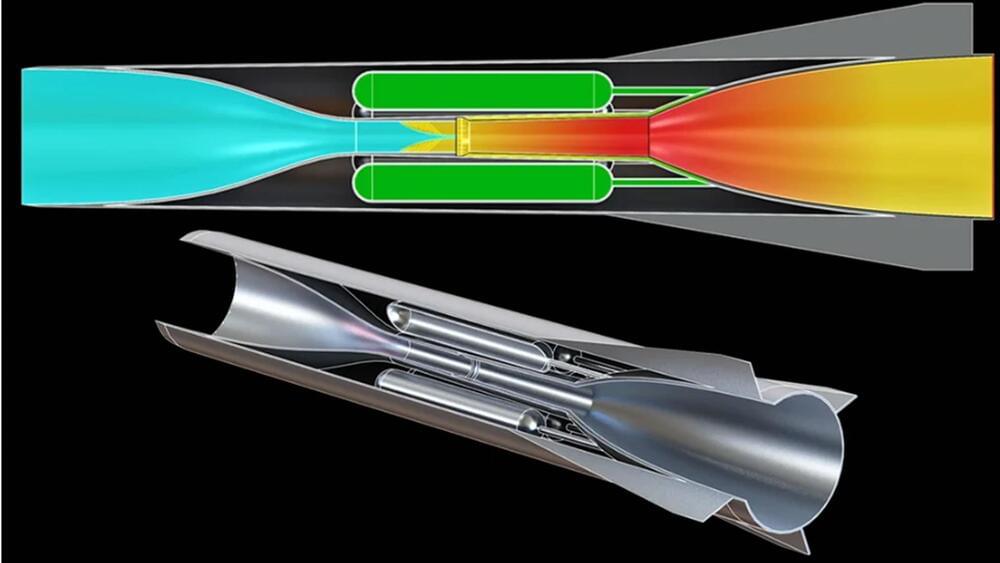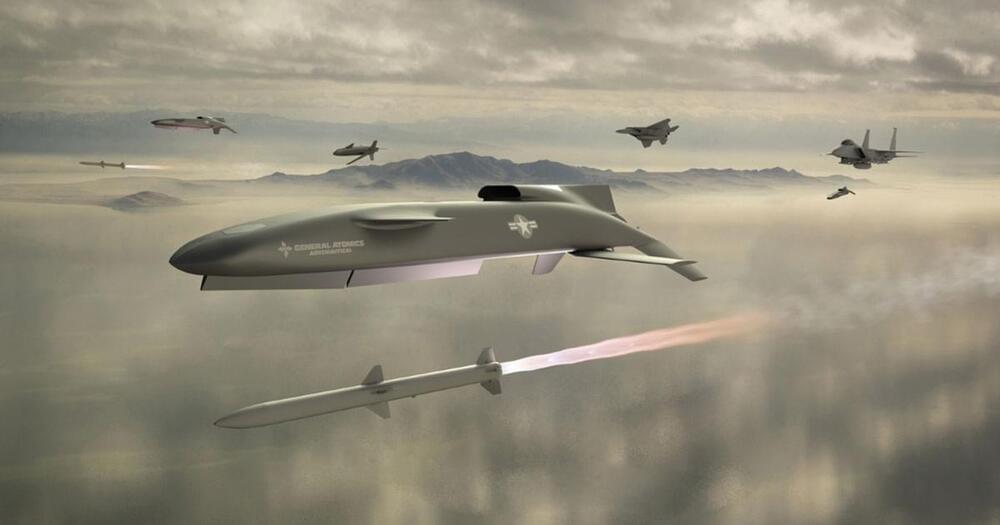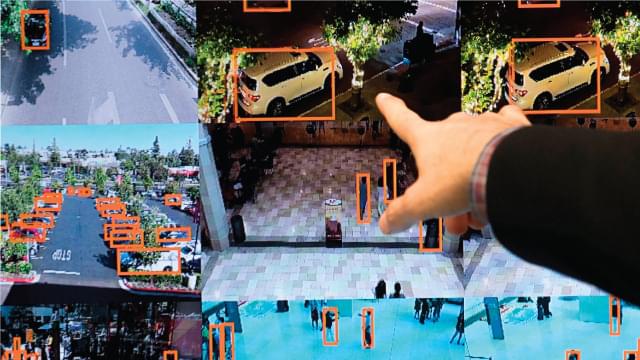Archive for the ‘military’ category: Page 37
Sep 14, 2023
GA-ASI Poised to Begin LongShot Flight Testing Phase
Posted by Saúl Morales Rodriguéz in categories: military, robotics/AI
“We are extremely excited to get in the air!” said Mike Atwood, Vice President of Advanced Aircraft Programs at GA-ASI. “Flight testing will validate digital designs that have been refined throughout the course of the project. General Atomics is dedicated to leveraging this process to rapidly deliver innovative unmanned capabilities for national defense.”
About GA-ASI
General Atomics Aeronautical Systems, Inc. (GA-ASI), an affiliate of General Atomics, is a leading designer and manufacturer of proven, reliable RPA systems, radars, and electro-optic and related mission systems, including the Predator® RPA series and the Lynx® Multi-mode Radar. With more than eight million flight hours, GA-ASI provides long-endurance, mission-capable aircraft with integrated sensor and data link systems required to deliver persistent situational awareness. The company also produces a variety of sensor control/image analysis software, offers pilot training and support services, and develops meta-material antennas.
Sep 13, 2023
Space Force to create “integrated” units responsible for acquisition, maintenance and operations
Posted by Genevieve Klien in categories: military, satellites
NATIONAL HARBOR, Md. — U.S. chief space operations Gen. Chance Saltzman on Sept. 12 announced the Space Force will experiment with a new command structure where a unit is responsible for all aspects of a mission area, including training, procurement and operations.
Two integrated units will be established, each run by a Space Force colonel — one for space electronic warfare; and the other for positioning, navigation, and timing (PNT) satellites.
This is a departure from the current structure where responsibilities for procurement, maintenance, sustainment and operations are fragmented under separate chains of command, Saltzman said in a keynote speech at the Air & Space Forces Association’s annual conference.
Sep 12, 2023
4 Reasons Why Becoming a Type 2 Civilization Is a Bad Idea
Posted by Jose Ruben Rodriguez Fuentes in categories: asteroid/comet impacts, energy, existential risks, military

The year one hundred two thousand twenty-three. A giant meteorite the size of Pluto is approaching the Solar System. It flies straight to Earth. But as the meteorite crosses Saturn’s orbit, a swarm of miner probes approaches it. The scan revealed no minerals on the object, so the searches returned with nothing.
Meanwhile, the Space Security Center in Alaska military personnel are setting up a laser. The Solar System witnesses a sudden flare and nothing remains of the dwarf-sized meteorite. Now, unless hydrogen miners on Jupiter post videos of another annihilation on social media… This is what the world will look like when humanity finally becomes a Type Two civilization on the Kardashev scale. We’ll have almost infinite energy reserves, the ability to prepare for interstellar flights, or to instantly destroy any threat. But will humanity really be safe? And what can ruin a Type Two civilization?
Sep 11, 2023
Move over AI, quantum computing will be the most powerful and worrying technology
Posted by Genevieve Klien in categories: cybercrime/malcode, military, quantum physics, robotics/AI
Head over to our on-demand library to view sessions from VB Transform 2023. Register Here
In 2022, leaders in the U.S. military technology and cybersecurity community said that they considered 2023 to be the “reset year” for quantum computing. They estimated the time it will take to make systems quantum-safe will match the time that the first quantum computers that threaten their security will become available: both around four to six years. It is vital that industry leaders quickly start to understand the security issues around quantum computing and take action to resolve the issues that will arise when this powerful technology surfaces.
Quantum computing is a cutting-edge technology that presents a unique set of challenges and promises unprecedented computational power. Unlike traditional computing, which operates using binary logic (0s and 1s) and sequential calculations, quantum computing works with quantum bits, or qubits, that can represent an infinite number of possible outcomes. This allows quantum computers to perform an enormous number of calculations simultaneously, exploiting the probabilistic nature of quantum mechanics.
Sep 9, 2023
U.S. Cyborg Soldiers to Confront China’s Enhanced ‘Super Soldiers’ — Is This the Future of Military?
Posted by Joseph Barney in categories: computing, cyborgs, military, neuroscience

What do you think? China is doing it. The West is going to have to keep up. Have you seen the Netflix series Altered Carbon? It’s like that.
A U.S. Army video shows its concept of the soldier of the future. At first glance, it looks like it will only be a better-equipped soldier.
Sep 8, 2023
Did Elon Musk prevent a Russia-Ukraine nuclear war?
Posted by Gemechu Taye in categories: Elon Musk, existential risks, internet, military, satellites, sustainability
New details of Musk’s involvement in the Ukraine-Russia war revealed in his biography.
Elon Musk holds many titles. He is the CEO of Tesla SpaceX and owns the social media company X, which was recently rebranded from Twitter. Going by an excerpt of his biography, published in the Washington Post.
According to the excerpt from Walter Isaacson’s book, Musk disabled his company Starlink’s satellite communication networks, which were being used by the Ukrainian military to attack the Russian naval fleet in Sevastopol, Crimea, sneakily. The Ukrainian army was using Starlink as a guide to target Russian ships and attack them with six small… More.
Continue reading “Did Elon Musk prevent a Russia-Ukraine nuclear war?” »
Sep 7, 2023
Musk cut internet to Ukraine’s military as it was attacking Russian fleet
Posted by Robin Indeededo in categories: government, internet, military
New details of the previously reported incident underscore how dependent the U.S. government has become on a company that once had to fight in court to become part of the Washington establishment.
Sep 6, 2023
Experts alone can’t handle AI — social scientists explain why the public needs a seat at the table
Posted by Gemechu Taye in categories: biotech/medical, Elon Musk, information science, military, robotics/AI
Are democratic societies ready for a future in which AI algorithmically assigns limited supplies of respirators or hospital beds during pandemics? Or one in which AI fuels an arms race between disinformation creation and detection? Or sways court decisions with amicus briefs written to mimic the rhetorical and argumentative styles of Supreme Court justices?
Decades of research show that most democratic societies struggle to hold nuanced debates about new technologies. These discussions need to be informed not only by the best available science but also the numerous ethical, regulatory and social considerations of their use. Difficult dilemmas posed by artificial intelligence are already… More.
Even AI experts are uneasy about how unprepared societies are for moving forward with the technology in a responsible fashion. We study the public and political aspects of emerging science. In 2022, our research group at the University of Wisconsin-Madison interviewed almost 2,200 researchers who had published on the topic of AI. Nine in 10 (90.3%) predicted that there will be unintended consequences of AI applications, and three in four (75.9%) did not think that society is prepared for the potential effects of AI applications.
Sep 6, 2023
Improvements ahead: How humans and AI might evolve together in the next decade
Posted by Dan Breeden in categories: biotech/medical, employment, food, military, robotics/AI
Other questions to the experts in this canvassing invited their views on the hopeful things that will occur in the next decade and for examples of specific applications that might emerge. What will human-technology co-evolution look like by 2030? Participants in this canvassing expect the rate of change to fall in a range anywhere from incremental to extremely impactful. Generally, they expect AI to continue to be targeted toward efficiencies in workplaces and other activities, and they say it is likely to be embedded in most human endeavors.
The greatest share of participants in this canvassing said automated systems driven by artificial intelligence are already improving many dimensions of their work, play and home lives and they expect this to continue over the next decade. While they worry over the accompanying negatives of human-AI advances, they hope for broad changes for the better as networked, intelligent systems are revolutionizing everything, from the most pressing professional work to hundreds of the little “everyday” aspects of existence.
One respondent’s answer covered many of the improvements experts expect as machines sit alongside humans as their assistants and enhancers. An associate professor at a major university in Israel wrote, “In the coming 12 years AI will enable all sorts of professions to do their work more efficiently, especially those involving ‘saving life’: individualized medicine, policing, even warfare (where attacks will focus on disabling infrastructure and less in killing enemy combatants and civilians). In other professions, AI will enable greater individualization, e.g., education based on the needs and intellectual abilities of each pupil/student. Of course, there will be some downsides: greater unemployment in certain ‘rote’ jobs (e.g., transportation drivers, food service, robots and automation, etc.).”















